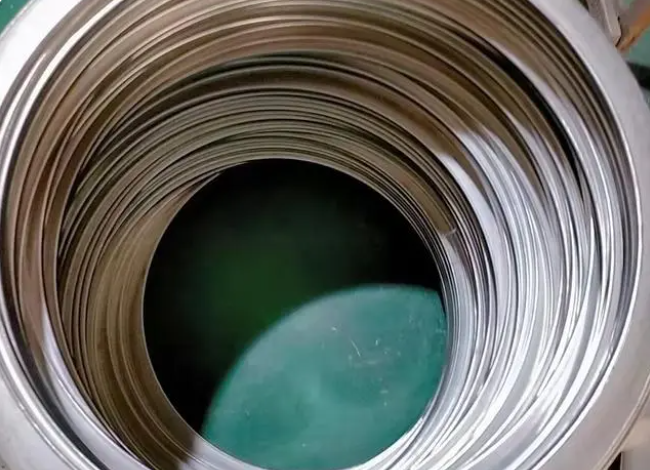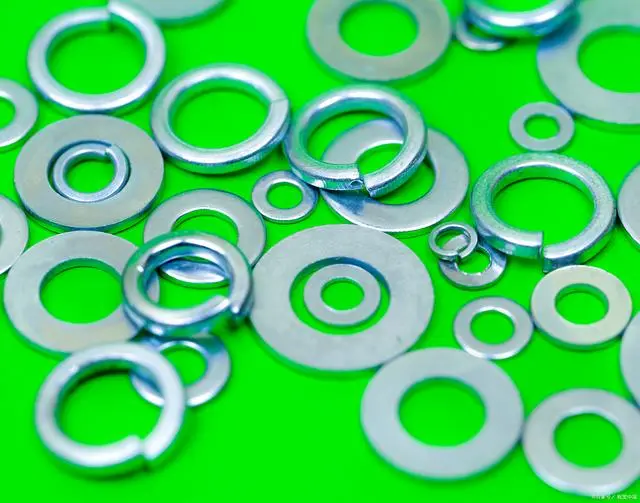Metal coated gasket alias (FPM FKM): It has high temperature resistance and can be used in environments ranging from -30 ℃ to 250 ℃, with strong resistance, oil resistance, and acid and alkali resistance. Usually used in high-temperature, high vacuum, and high-pressure environments, but also suitable for oily environments. Due to its various excellent properties, fluororubber is widely used in departments such as petroleum, chemical, and aerospace.
A composite gasket that uses non-metallic materials (such as flexible graphite, asbestos rubber sheets, ceramic fibers) internally and metal sheets coated with specific cold work processes externally. It is usually divided into two types according to the gasket cross-section: flat type coating and corrugated type coating. It is a traditional type of sealing gasket and is suitable for sealing heat exchangers, pressure vessels, pumps, valves, and flange surfaces.
Metal clad gaskets are usually made of soft iron, various stainless steel, aluminum, copper, titanium, and other materials. They can be used as shell metal or internal filling materials according to different working conditions and requirements. Specifically, metal clad gaskets can be formed by alternately overlapping and spiral winding metal strips such as SUS304, SUS316, and other alloy materials with soft materials such as graphite, asbestos, polytetrafluoroethylene, and asbestos free materials. This structure gives the gasket the characteristic of resilience, which can be made according to different locking force requirements and controlled by using inner and outer steel rings to control its compression.
When selecting metal clad gaskets, comprehensive consideration should be given to factors such as working pressure, working temperature, medium type, gasket type, and gasket size. At the same time, attention should also be paid to preventing stress concentration, corrosion and erosion, as well as the installation and disassembly of gaskets during use.

Product advantages:
Strong, non fragile, and sturdy, but with limited rebound force, it is necessary to have a flat flange surface and high tightening force to achieve good results (can be improved, coated with graphite plate). According to different materials, it can be combined into various forms such as 201, 304, and 316 stainless steel wrapped graphite (temperature resistance 650 degrees) wrapped gaskets, asbestos wrapped gaskets, ceramic fiber wrapped gaskets (1400 degrees) wrapped gaskets, and so on.
The sealing gasket is made of vulcanized high-strength sealing plate and oil-resistant asbestos rubber plate, with a surface that is anti stick, smooth and flat, high strength, good compression resilience, and strong torque retention. The product is temperature resistant, acid and alkali resistant, and corrosion-free. It is an ideal sealing gasket for media such as air, oil, and water, which can prevent "three leaks" and avoid pollution. PTFE products are made of PTFE powder and sintered after cold pressing with a mold. They have excellent corrosion resistance, good self-lubrication, and non adhesion. Therefore, the products are almost resistant to all chemical media and have characteristics such as wear resistance, pressure resistance, and low friction coefficient.
The metal clad gasket is made from asbestos fiber and rubber as the main raw materials, supplemented by rubber compounding agents and fillers, through mixing and stirring, hot roll forming, vulcanization and other processes. Asbestos fiber gaskets can be divided into ordinary rubber gaskets and oil resistant asbestos rubber gaskets based on their formula, process performance, and usage. Suitable for sealing of water, steam, oils, solvents, moderate acids, and alkalis, applied in sealing of medium and low pressure flange connections.

Metal coated gasket is a gasket with a wide range of basic applications. It is vulcanized with polymers, added with fillers, pigments, and various additives to form synthetic rubber, which has excellent compressibility and resilience. With only a very low pre tightening force, it can effectively seal under low temperature and low pressure conditions. It is easy to disassemble and can also achieve good sealing effect on uneven sealing surfaces, Due to its excellent expandability and permeability resistance, rubber provides a very effective seal against the passage of gases and fluids.









